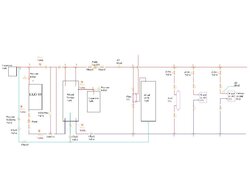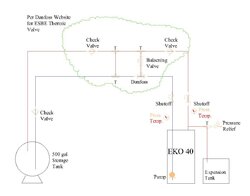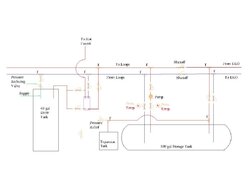Well I have bought an EKO 40 and now would like some insight on plumbing.
I plan on using either 1 1/4 inch copper or black pipe (have not decided yet) from the boiler to storage and 1 inch PEX from storage to Loops.
I kinda went crazy with the valves but hey....I haven't bought any plumbing yet.
Nofossil....you might recognize this layout.....thanks for all of your Pics and suggestions throughout this forum.
I am converting these from AutoCAD and the text seems to get a bit funky...sorry
I know that there are several ways to plumb these systems but I guess that I am just asking if I am on the right track or not. Any and all suggestions are welcome.
Thanks
I plan on using either 1 1/4 inch copper or black pipe (have not decided yet) from the boiler to storage and 1 inch PEX from storage to Loops.
I kinda went crazy with the valves but hey....I haven't bought any plumbing yet.
Nofossil....you might recognize this layout.....thanks for all of your Pics and suggestions throughout this forum.
I am converting these from AutoCAD and the text seems to get a bit funky...sorry
I know that there are several ways to plumb these systems but I guess that I am just asking if I am on the right track or not. Any and all suggestions are welcome.
Thanks




